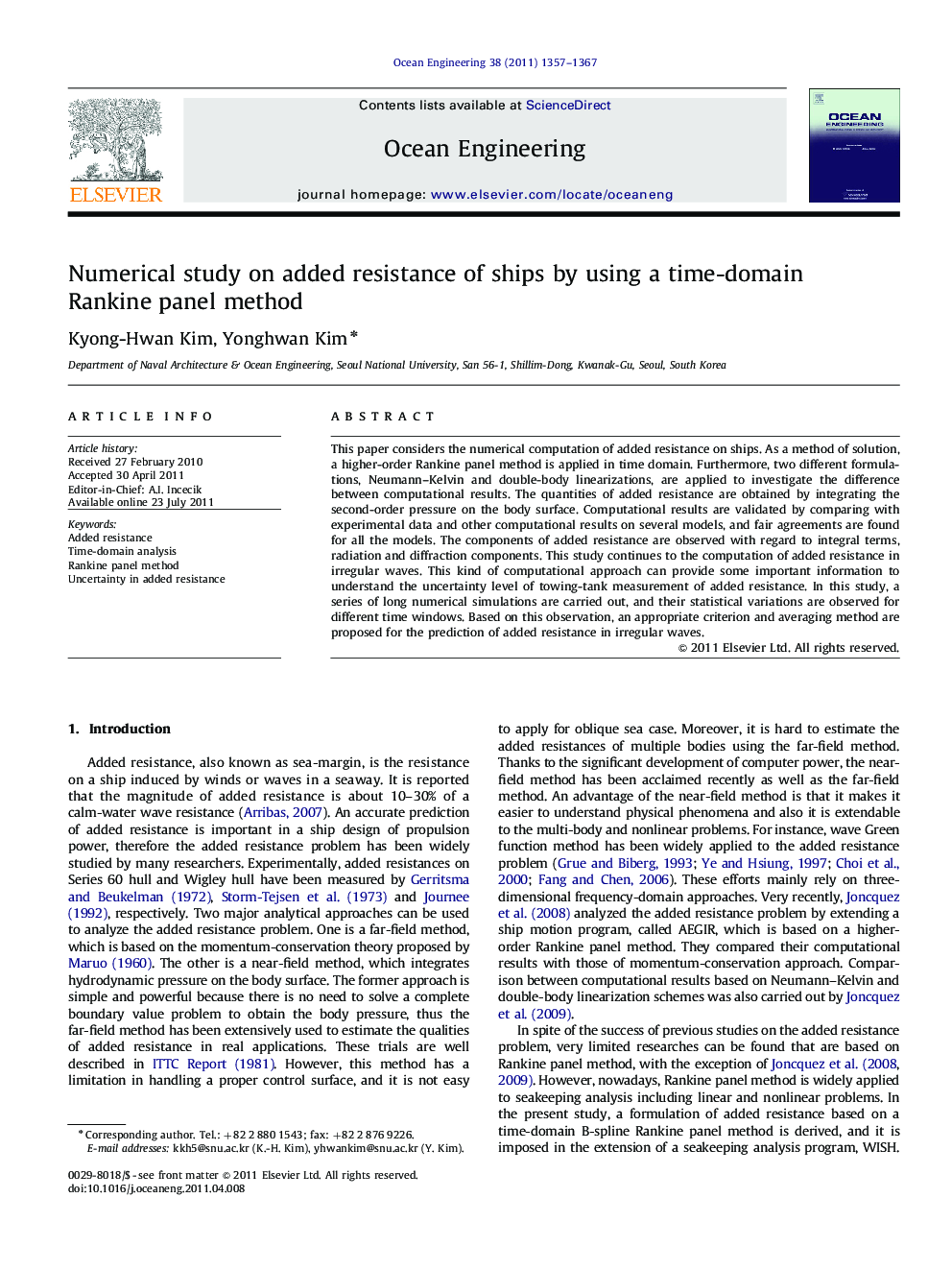| کد مقاله | کد نشریه | سال انتشار | مقاله انگلیسی | نسخه تمام متن |
|---|---|---|---|---|
| 1726570 | 1015122 | 2011 | 11 صفحه PDF | دانلود رایگان |

This paper considers the numerical computation of added resistance on ships. As a method of solution, a higher-order Rankine panel method is applied in time domain. Furthermore, two different formulations, Neumann–Kelvin and double-body linearizations, are applied to investigate the difference between computational results. The quantities of added resistance are obtained by integrating the second-order pressure on the body surface. Computational results are validated by comparing with experimental data and other computational results on several models, and fair agreements are found for all the models. The components of added resistance are observed with regard to integral terms, radiation and diffraction components. This study continues to the computation of added resistance in irregular waves. This kind of computational approach can provide some important information to understand the uncertainty level of towing-tank measurement of added resistance. In this study, a series of long numerical simulations are carried out, and their statistical variations are observed for different time windows. Based on this observation, an appropriate criterion and averaging method are proposed for the prediction of added resistance in irregular waves.
► A numerical method for added resistance on ships is developed using a Rankine panel method.
► Waterline integral term provides the largest contribution in added resistance.
► Neumann-Kevin and double–body linearizations predict slightly different results, depending on ship speed and ship slenderness.
► Long–time simulation or averaging short–time results are recommended for the prediction of added resistance in irregular waves.
Journal: Ocean Engineering - Volume 38, Issue 13, September 2011, Pages 1357–1367